How to Make Perfect Roasted Vegetables
Don’t let colder weather get in your way of meeting your daily veggie quota! Learn my top secrets about how to make perfect roasted vegetables every single time!
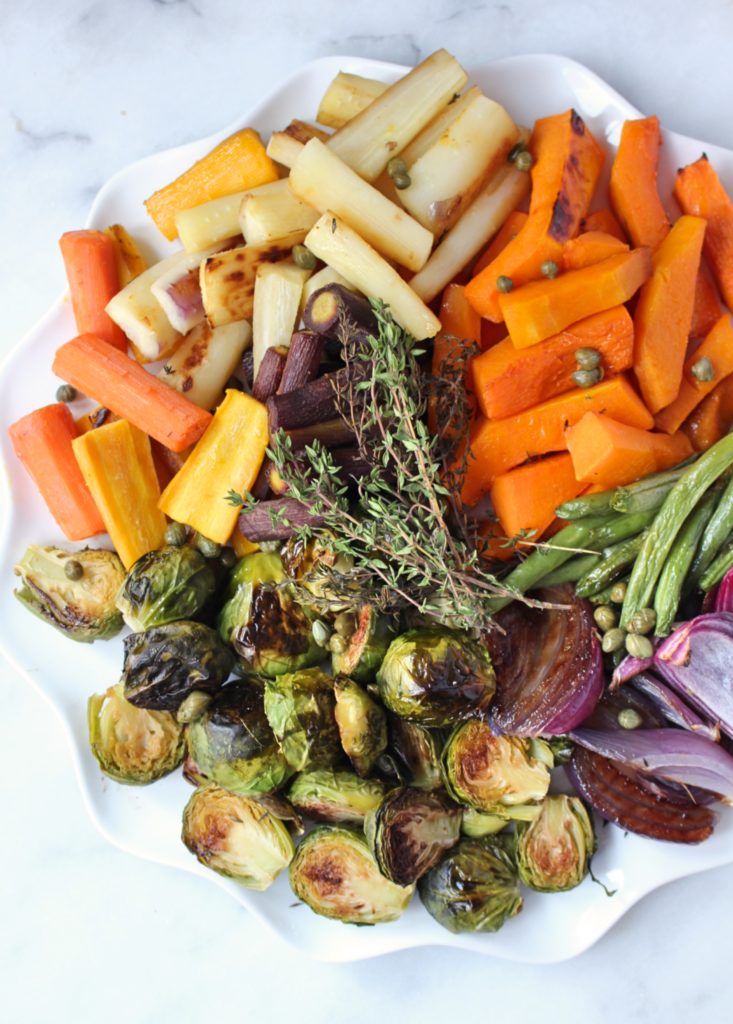
Roasted vegetables give me life. They are my FAVORITE way to enjoy veggies, a comforting way to meet my nutrient quota as the weather cools, and totally delicious.
And if you, or someone you know, isn’t quite sold on eating their daily dish of the good stuff, roasting vegetables may be the perfect way to help them fill half of their plate at most meals.
Raw vegetables can be bitter, cold, and a little too crunchy (especially as the weather cools). Making perfect roasted vegetables, however, sweetens them up, warms them up, and softens them, so they’re much more palatable for my not-yet veggies lovers.
How does it happen? When you roast vegetables, you caramelize the sugars that are naturally found in veggies. That’s why they taste SO much sweeter than their raw counterparts.
And the best news… you can make perfect roasted vegetables using ANY veggie that you like. Over the years, I’ve shared specifics about how to make the best roasted carrots, tomatoes, parsnips, potatoes, and butternut squash, but this is a general tutorial for ANY veg (so you can make my Easy Roasted Vegetable and Quinoa Salad!)
But first… let’s talk about the NUTRITION (duh!)…
Are roasted vegetables as nutritious as raw?
First thing’s first… most people don’t eat enough vegetables – cooked or raw. Therefore, if eating roasted veggies helps you eat the recommended 3 cups of vegetables per day, then I’m 100% for you eating 100% roasted vegetables.
Second, roasted vegetables can be just as nutritious as raw. Yes, you lose some vitamins when cooking vegetables, BUT this same process makes other nutrients easier to absorb. For example, the antioxidant lycopene is easier to absorb in cooked tomatoes when compared to fresh. (And I loooove me some roasted tomatoes – especially this version with balsamic vinegar!)
As a general rule of thumb, I encourage you to eat a VARIETY of raw and cooked vegetables. But there’s nothing wrong if you lean towards more cooked over raw.
Do you need to add oil (or fat) when cooking?
The quick answer: no. BUT, it does make them even more palatable. Even more, adding some fat (without over doing it) can help you absorb some nutrients found in certain vegetables. For example, you better absorb the vitamin E found in broccoli and asparagus, plus the vitamin K found in Brussels sprouts if they’re paired with some fat.
Does the type of fat matter?
Yes! We want to choose a heart-healthy fat with the proper smoke point. Smoke-what? The smoke point is the “temperature at which fats stops shimmering and starts sending out some serious smoke signals.” This is important for your health because if a fat is heated past its smoke point, the fat will break down, releasing free radicals, which in excess can be dangerous. That’s why choosing the best oil for the temperature at which you’re cooking is crucial!
When roasting, my go-to choice is refined avocado oil (affil link). It has a high smoke point (up to 500 degrees!). If you don’t have avocado oil, you can still use olive oil because my suggested roasting temperature is 375 degrees.
OK, so now that we cleared up the nutrition when it comes to roasting, let me walk you through my proven method so you get crispy on the outside, soft on the inside, perfect roasted vegetables EVERY. SINGLE. TIME!
Here are a few things to keep in mind to make perfect roasted vegetables:
- Make sure there’s enough room on your baking sheet. Don’t overcrowd your sheet, or you’ll STEAM the vegetables instead of roasting them! If necessary, use multiple baking sheets.
- Roast vegetables on the MIDDLE rack for the most even cooking experience.
- Be sure your veggies are FULLY DRY before adding any fat and roasting.
- Cut your veggies into UNIFORM SIZE pieces. This way, the entire tray cooks at the same time.
- Cook like vegetables together. Not all vegetables require the same cooking time, so try to batch the veggies that have similar cooking times together.
- Choose a high smoke point oil, like avocado oil, mentioned above.
Let’s get cookin’…
PrintHow to Make Perfect Roasted Vegetables
Ingredients
6 cups vegetables, cut into like-sized pieces
- Brussels sprouts, halved
- Butternut squash, cubed
- Onion, cut into chunks
- Broccoli or Cauliflower florets
- Carrots, cut into 2-inch pieces
- Etc.
1-2 tablespoons avocado oil or olive oil
Salt and pepper, to taste (I use a generous pinch of both)
Instructions
- Preheat oven to 375°F.
- Wash and dry vegetables thoroughly. Toss in oil in a large mixing bowl.
- Evenly distribute vegetables on a large baking sheet lined with parchment paper (or a silicone baking mat). Do not overcrowd pan (you may need more than 1 baking sheet). Sprinkle with salt and pepper.
- Roast vegetables for 30-45 minutes, tossing half way through. Vegetables should be soft to fork and browned at edges when done cooking. Enjoy warm! 🙂
Don’t Forget to PIN IT…
The only question left is… What vegetable will you perfectly roast first?!
XO


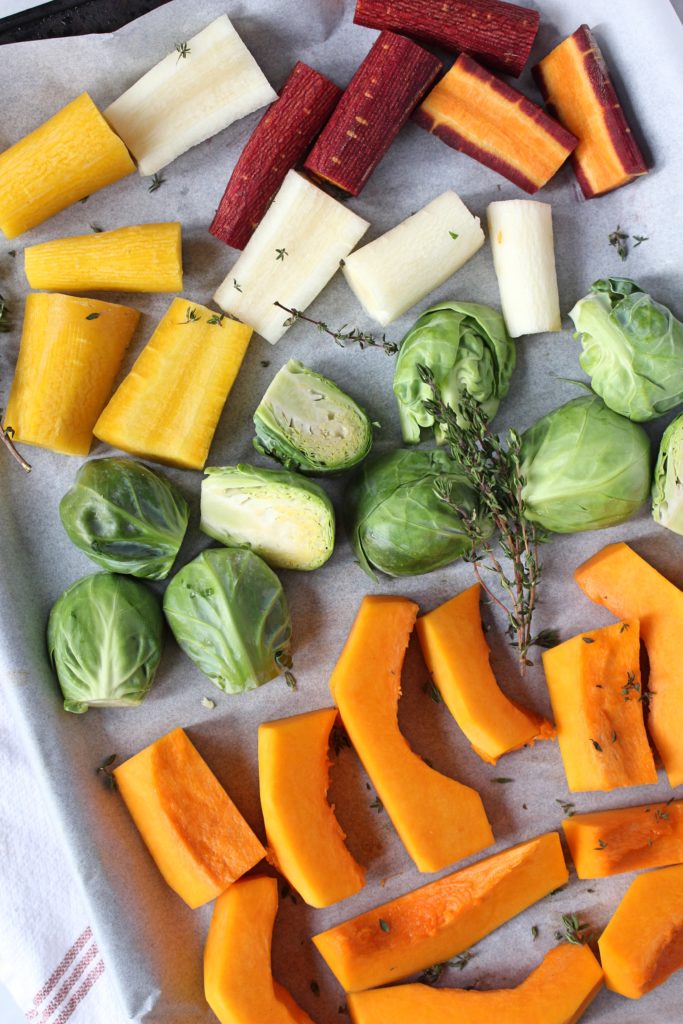
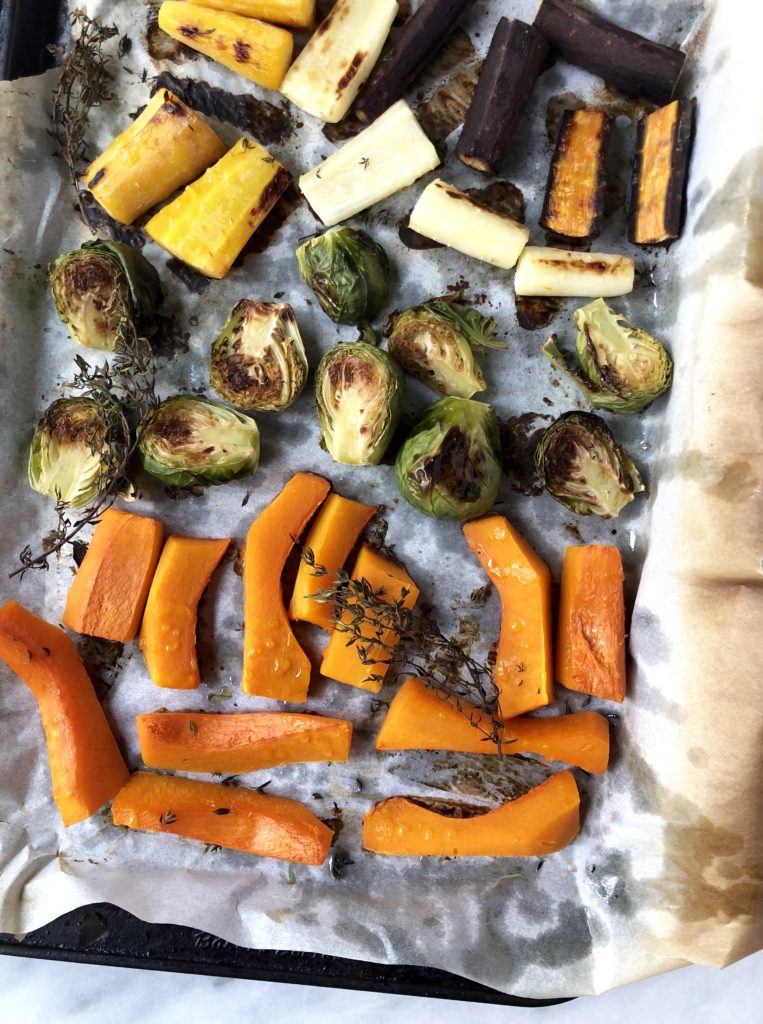
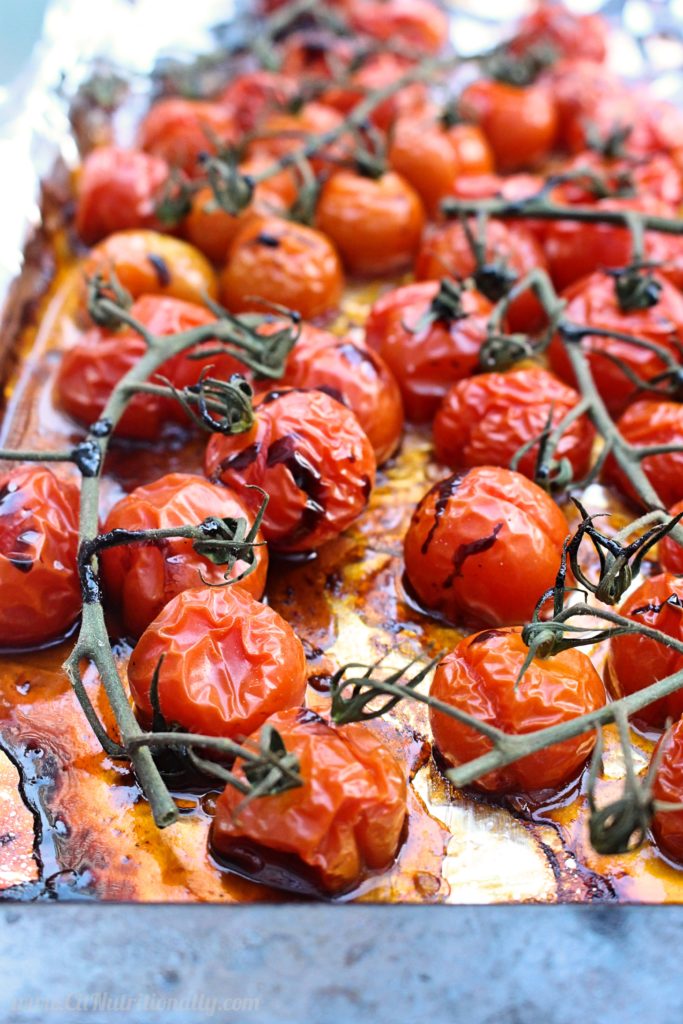
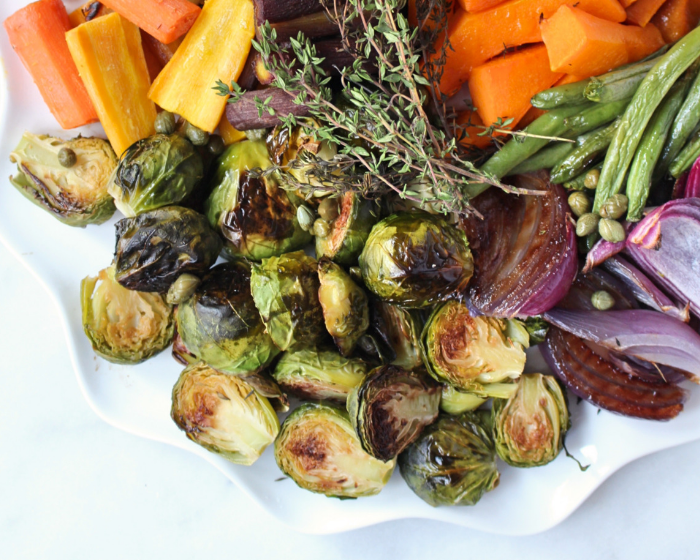


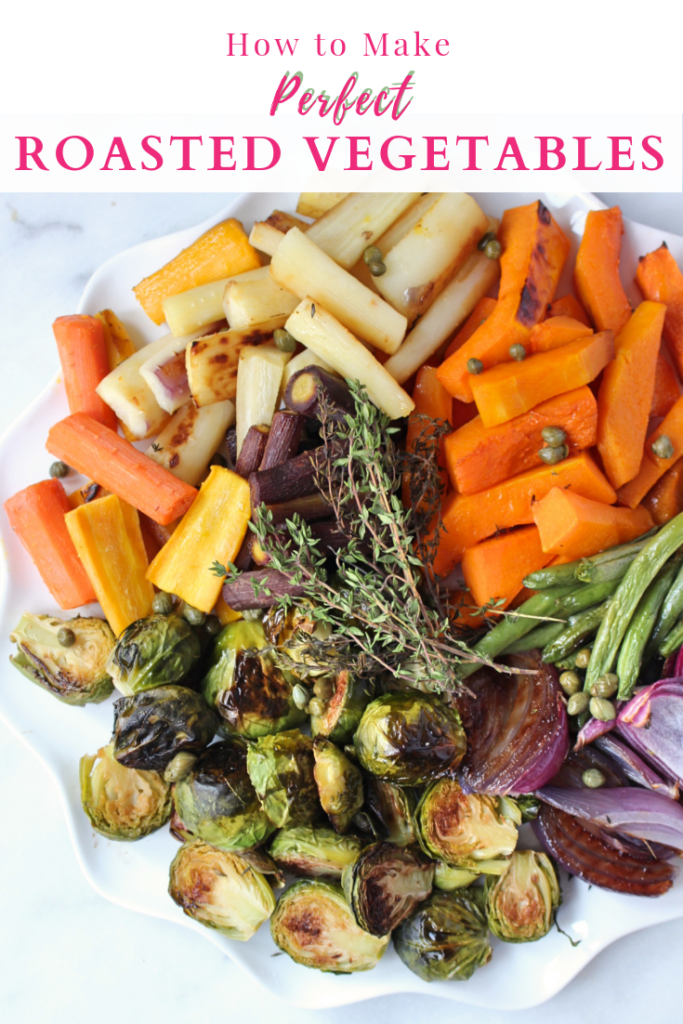
 Hi there!
Thanks for stopping by! I'm Chelsey, an online Registered Dietitian, recipe developer, budding photographer, and coffee addict! My mission is to help you feel good through food by answering the question "What should I eat?" Let's make nutrition approachable!
I hope you enjoy my personal collection of simple, healthy, food allergy friendly and nutritiously delicious recipes, plus tips and tons of tricks that will help YOU live a nutritionally-balanced life! I look forward to getting to know you better...
Hi there!
Thanks for stopping by! I'm Chelsey, an online Registered Dietitian, recipe developer, budding photographer, and coffee addict! My mission is to help you feel good through food by answering the question "What should I eat?" Let's make nutrition approachable!
I hope you enjoy my personal collection of simple, healthy, food allergy friendly and nutritiously delicious recipes, plus tips and tons of tricks that will help YOU live a nutritionally-balanced life! I look forward to getting to know you better...







